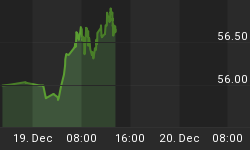A Federal Reserve balance sheet that has grown from 900 billion to well over 2 trillion since last fall may be on its way to 10 trillion according to some observers. There is no denying it's been pedal to the floor in money-printing efforts to restore the credit markets back to health.
What also needs to be restored is profits for the banking industry. It is that industry, after all, that the Fed really answers to. It is also an industry that knows how to profit from inflation. Throughout history bankers and the ruling classes have profited from inflation, as a transfer of wealth occurs at the expense of the vast majority of the population.
Along those lines what we have witnessed since last fall has been a Fed effort to create inflation and rescue the banking system. This following a textbook case of the law of unintended consequences, where runaway commodity and food prices -- a consequence of an irresponsible bubble creating Fed -- earlier in 2008 and a financial sector ailing due to its own greed, saw a miscalculating Fed bring a violent reversal of those trades and a crash, when it decided to backstop certain financial institutions and not others.
Since then, the Fed has been purchasing commercial paper, mortgage-backed securities, and any and all other assets to keep the banking system from collapsing into a deflationary spiral. Expansion of the Fed plan, including purchasing consumer and small business loans, as circumstances warrant with the help of the Treasury, is sure to follow.
Calls for the Fed to "proceed with caution" with its new policy are going unheeded. The fear is that plans are not in place to immediately reverse course at first sign of inflationary trouble. In a market where a misguided fear of a deflationary winter has its grip on most, inflation is a luxury item beyond reach for now.
The stock market crash and continued deleveraging brought the financial system's money flow, gripped by fear, to a standstill. The Fed's efforts at gorging the money supply with new liquidity is an attempt to overcome that standstill -- an opposing force also referred to as the rate of money velocity -- and create positive inflation.
With green lights flashing across the central banking landscape, eager governments and millions of citizens in dire straits, it is hard to imagine that unlimited money printing will give way to a finite opposing force. The point the opposing force is finally overcome is obviously of real concern due its inflationary ramifications, and was reflected in the strong price of gold throughout this crisis. Gold's strength looks to be signaling a coming inflation and an inability of central banks to withdraw said stimulus in time.
Weighed down by enormous debt levels, no domestic savings from which to draw, angry foreign creditors and a collapsing tax base, the Fed has no choice but to inflate in a big way; while it may be a race to inflate worldwide, the US has more baggage than others. With all countries both daring the inflation monster while trying to stay one step ahead of its jaws, the one that is weighed down the most, much like the slowest antelope in tiger country, will naturally be the first to be caught. The carnage won't be pretty, but gold will shine.















